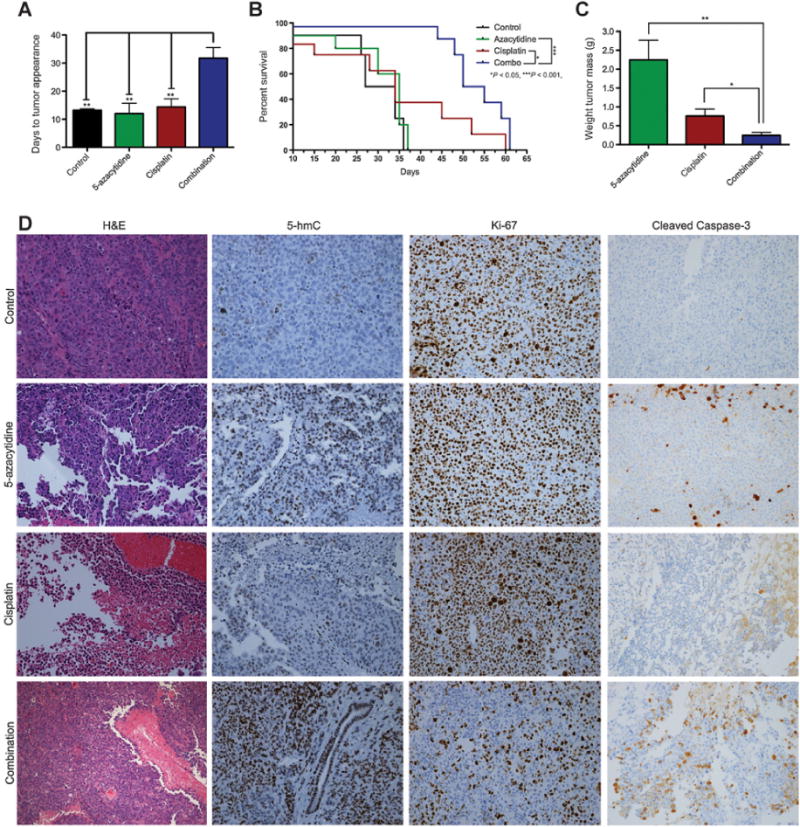Figure 6.

Pretreatment with 5-azacytidine followed by CDDP therapy increases overall survival in vivo in an aggressive platinum A2780Resistant tumor xenograft model. A, Comparative analysis of the tumor development timeline in animal models. A2780Res controls (n = 5) and animals treated with either 5-aza (n = 5) or CDDP monotherapy (n = 8) developed visible tumors in a significantly shorter time than mice treated with combination therapy (n = 8; **, P < 0.01), which received pretreatment with 5-aza followed by CDDP therapy. B, Kaplan–Meier curve showing survival for A2780Res controls (n = 5), 5-aza monotherapy (n = 5), CDDP monotherapy (n = 8), and 5-aza pretreatment + CDDP combination therapy (n = 8) cohorts. The combination group showed a statistically significant survival benefit compared with all the other groups. Of note, the overall survival of mice treated with combination therapy was significantly increased compared with either CDDP alone (*, P < 0.05) or 5-aza monotherapy (***, P < 0.001). C, Comparative analysis in a separate experiment of the average tumor weight in mice treated for 3 treatment cycles with either 5-aza (n = 4) or CDDP monotherapy (n = 6) when compared with combination therapy (n = 6). Most importantly, the analysis shows a significantly reduced tumor burden in A2780Res mice pretreated with 5-aza followed by CDDP therapy when compared with either CDDP alone (*, P < 0.05) or 5-aza alone (**, P < 0.01). D, Comparative IHC analysis of tumor markers in the various treatment cohorts. Tumors in the combination therapy group show increased 5-hmC levels, a lower Ki-67 cellular proliferation index, and higher tumor apoptosis as assessed by cleaved caspase-3 IHC (20× objective lens magnification).
